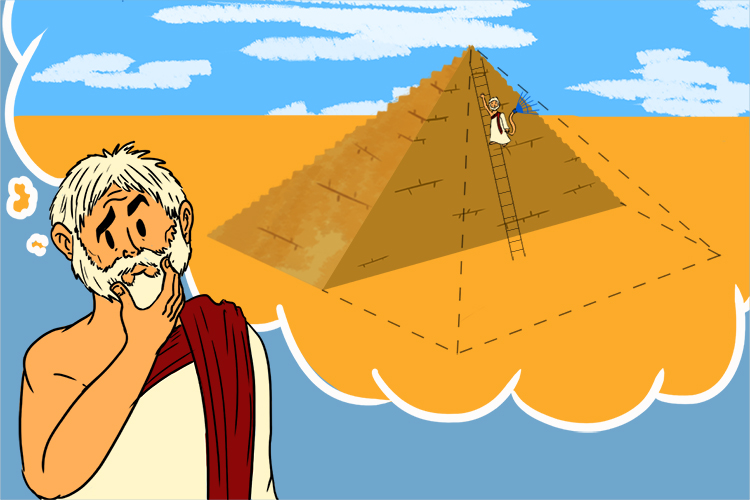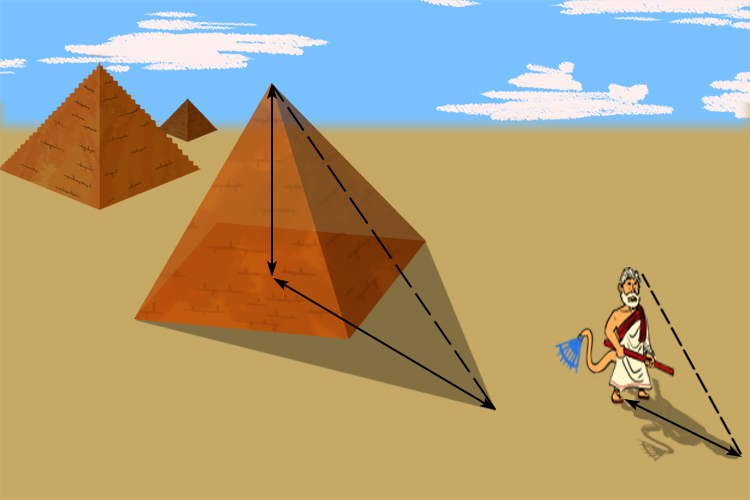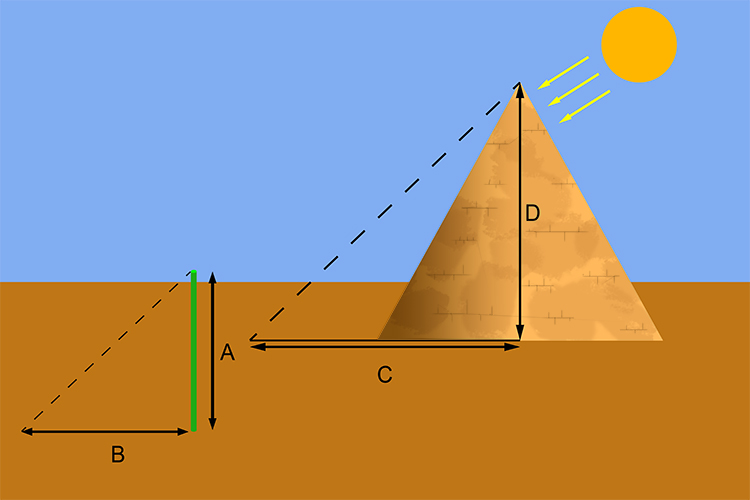Intercept and midpoint theorem
Thales' intercept theorem
Thales' intercept theorem (or triangular proportionality theorem).
Thales was a Greek mathematician who founded geometry. His name is pronounced "they-leez".

He had a strange tail (Thales) and raked up hay and leaves (Thales) with it into separate (intercept) piles.
Thales lived in Greece in 640BC and was asked to measure the height of the oldest and largest pyramid in Egypt.

The oldest and largest pyramid in Egypt is the Cheops Pyramid (Cheops is pronounced chee-ops).

Now if he could have chopped (Cheops) the pyramid in half it would have been very easy for him to measure the pyramid.
His method was ingenious.

To determine the height of the pyramid he measured the length of the pyramid's shadow when the length of his own shadow was equal to his height.
But he played around with these ideas and realised that he could work out the height of the pyramid at any time of the day (he started using poles as well).

Thales measured the length of a pole (A) and the length of its shadow (B) and at the same time measured the length of the shadow C.
He realised that the ratio
`A/B` is identical to `D/C`
And therefore `A/B=D/C`
So if A = 1.8m B = 2.2m and C = 168m then:
`1.8/2.2=D/168`
`D=1.8/2.2times168`
Therefore D = 138metres
So at any time of day Thales could have worked out the height of the Pyramid.




